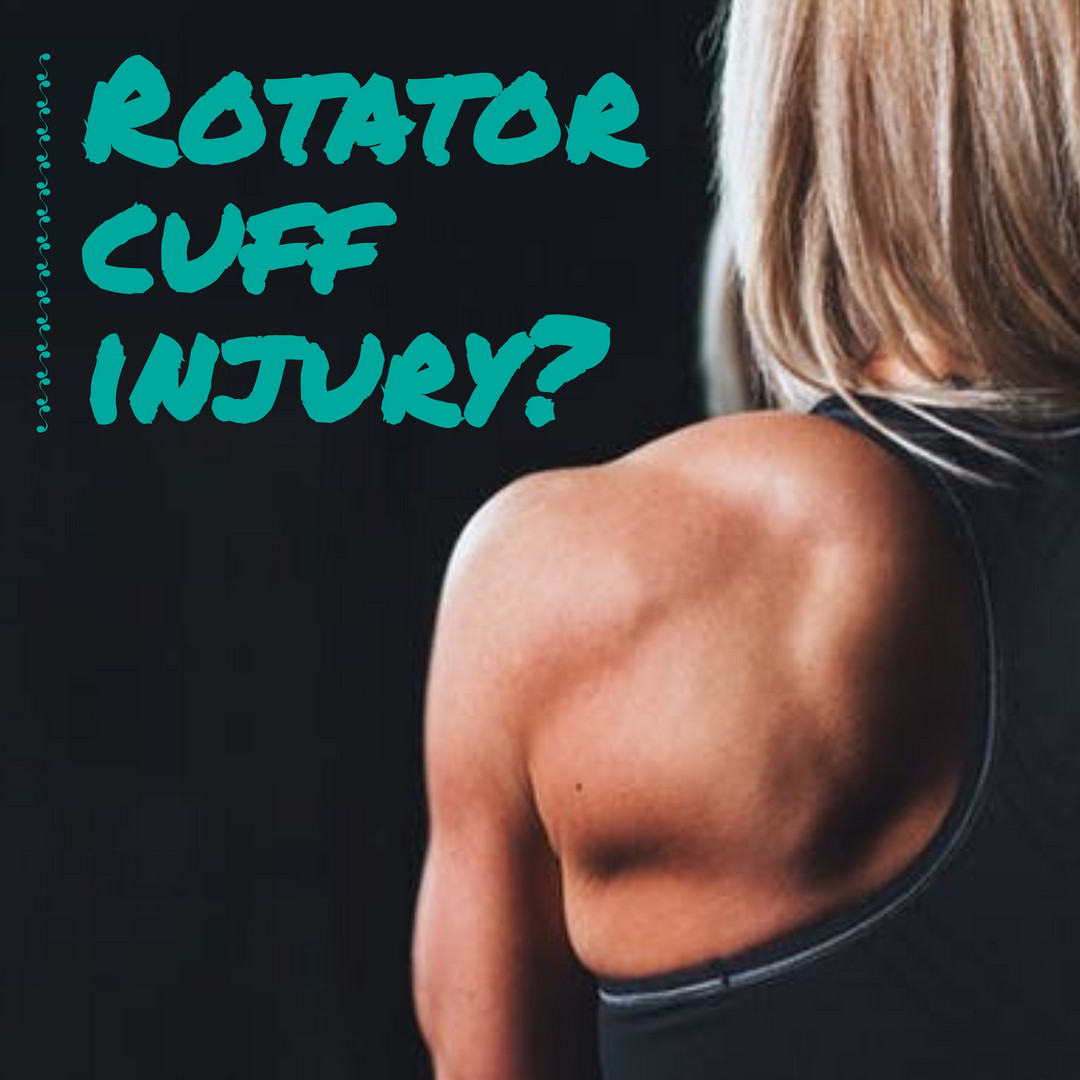Rotator Cuff Blogg
Hey everyone! This month’s blog focuses on the shoulder, more specifically the rotator cuff muscles and some common conditions we regularly treat here at Back in Business Physiotherapy. The shoulder is one of the most common regions of the body that we treat. One of the main reasons the shoulder gets injured is that it’s a super mobile joint. It is the most movable joint in the body in fact! In order to have so much mobility, the joint has to sacrifice stability, and the lack of stability in the shoulder leaves it susceptible to injury.
Efficient movement in the shoulder largely relies on the proper functioning of the rotator cuff muscles. Read on to find out what they are, what they do, and what can sometimes go wrong with them.
What is the rotator cuff?

The rotator cuff is a group of four muscles – the Supraspinatus, Infraspinatus, Teres Minor and Sub-scapularis. If you have trouble remembering the names, just think ‘SITS’. Easy-peasy! Each muscle at-taches from the shoulder blade (scapula) to the arm bone (humerus) and has a specific function to play in shoulder movement.
What does it do?
In a nutshell, the supraspinatus helps to take the arm away from the body (abduction), the infraspinatus and teres minor help to rotate the arm outwards (external rotation), and the subscapularis helps to rotate the arm inwards (internal rotation… Other muscles also help with these movements too). Collectively, the four muscles work together to keep the ‘ball’ of the arm bone centred over the ‘socket’ of the shoulder blade. By doing this, it allows us to have a relatively free and large range of motion in the shoulder in all directions of movement. But remember, lots of mobility is only achievable by sacrificing stability, and this is where the shoulder and rotator cuff sometimes come unstuck.
Common conditions
Here is a brief overview of some common rotator cuff disorders:
• Rotator cuff tendon injury: Who remembers what tendons do? We’ll give you a clue… They at-tach muscles to bones. A tendon may become injured acutely (known as tendinitis) or in a chron-ic way through degeneration (known as tendinopathy). This commonly occurs due to impact to the shoulder or through repetitive movements as seen with throwing sports in the initial stages. If the movements continue over a long period of time and healing doesn’t occur fully, the tendon tissue can degenerate, leading to tendinopathy.
• Rotator cuff tear: If the above process continues over an even longer time period, the tendon will degenerate more and eventually it may reach a point where the tendon tears. This can cause significant loss of movement and pain with shoulder movements.
• Subacromial impingement: Between the ball of the arm bone and the tip of the shoulder (a.k.a The acromion) sits a small space called the subacromial space. Several structures run through this very small space, including the tendon of the supraspinatus and part of the biceps muscle. There is also a fluid filled sac called the subacromial bursa which helps to keep movement smooth in the shoulder joint. Repetitive movements can lead to any of these structures becoming irritated and inflamed, making an already small space even smaller. The shoulder then cannot function to its full movement capability and movement becomes painful. Rotator cuff tendinitis is one cause of subacromial impingement.
All of the above conditions share some common signs and symptoms. The main symptom experienced is pain with shoulder movement, particularly when raising the arm above the head, in front or out to the side of the body. Acute tendinitis, chronic tendinopathy and a tear can all lead to weakness during shoulder movements, although weakness associated with a tear is usually more severe. You may also experience pain when lying on the affected shoulder at night-time. Sometimes it can be difficult to determine from the outset what condition is developing, but we will make an informed decision based on the information you give us and what signs and symptoms you have when we assess you.
Treatment
All of the above conditions can be managed well with manual treatment and exercise. With the exception of severe tears, which may need a shoulder specialist/surgical opinion if the injury doesn’t respond well to conservative treatment, rotator cuff injury is commonly managed from start to finish by us here at Back in Business Physiotherapy, so always come to us as a first port of call.
Acute injuries will always need time for the body to deal with the inflammation that has occurred. Then a combination of massage, shoulder and spinal joint mobilisation and mobility and strengthening exercises are what is required to get over these painful conditions. The exercise program will start simple and grad-ually progress over time; it aims to return the muscle and tendon to full strength, as well as re-train efficient shoulder and spinal movements that may have been lost during the injury process.
We may decide to use other treatment techniques including taping, needling under guided ultrasound, therapeutic ultrasound to aid in the healing process.
Most rotator cuff injuries respond very well to manual treatment. Even small tears can be well managed this way. If you have shoulder pain and need some help, please get in touch today, so we can get you back on the dancefloor, shimmying to your heart’s content!
Uploaded : 1 April 2020




